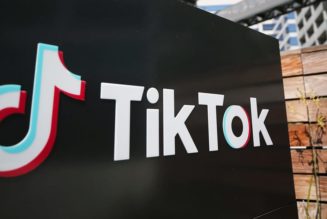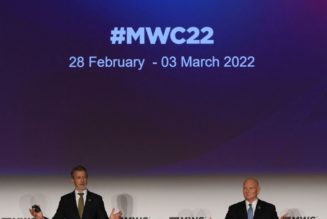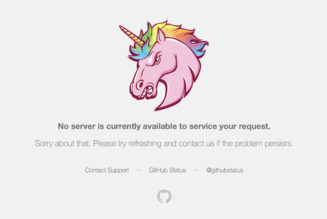
One day in 2011, Jack Dorsey called an all-hands meeting at Twitter. The company was in the middle of a push to redesign Twitter’s mobile apps, and the effort had led to anger and burnout. Dorsey, who had co-founded the company in 2006 with Ev Williams, Biz Stone, and Noah Glass, was then serving as its executive chairman.
The company prepared for what it assumed would be a pep talk from the most eccentric of Twitter’s co-founders. And they got one, of a sort. As the meeting began, the lights at Twitter headquarters dimmed. An acoustic guitar began playing over speakers. Dorsey encouraged everyone to listen to the lyrics.
Blackbird singing in the dead of night
Take these broken wings and learn to fly
All your life
You were only waiting for this moment to arise
Sitting in the dark, no one was entirely sure what meaning Dorsey found in the Beatles’ “Blackbird.” A decade later, people I spoke with about the incident still weren’t entirely sure. From his earliest days at the company, Dorsey was an enigma: on one hand, a visionary leader with an uncanny grasp of what the future holds; on the other, a distant and often inscrutable manager whose slowness in making decisions would hobble the company for almost half a decade.
The song concluded. Afterward, people debated what it meant, to no real end. The company finished the sprint. Jack Dorsey returned to the company as CEO a few years later. This Monday, he announced that he was quitting.
Almost nobody thought this moment would arrive today — a day that Twitter had told employees to take as “a day of rest.”
Elliott wins in the end?
The two questions you want to ask when a CEO steps down are: why now? And what next?
Let’s start with the first one.
On one hand, this is a genuine surprise. By many metrics, this has been a banner year for Twitter. Revenue is up, and so is the user base. It shipped more individual products than perhaps at any other time in its history. (Most notably, it cloned Clubhouse at impressive speed, leaving that once-buzzy social audio platform moribund.) After spending half a decade stuck in the mud, there was a sense that Twitter finally had real momentum. From that perspective, Dorsey’s position at the company looked secure.
But Twitter is publicly traded, and its slow growth (particularly in comparison to the behemoth Facebook) has long rankled investors.
Last spring, the activist investor Elliott Management Corp. took a 4 percent stake in the company and announced its intention to replace Dorsey as CEO. While little known to the public, Elliott — a hedge fund controlled by the billionaire Paul Singer — is among the most feared investors in the world. When the news hit, I wrote here that Jack Dorsey was in for the fight of his life. As it turned out, he was.
The odd part is that it seemed like Dorsey had won. Days after Elliott made its move, Twitter surrendered, agreeing to add three new board members and form a committee to review its governance and evaluate a succession plan. Elliott partner Jesse Cohn joined Twitter’s board, but stepped down in June in what I took to be a sign that the firm was satisfied by Twitter’s progress.
The catch was that Elliott had set several aggressive growth targets for Dorsey. Under the agreement, Twitter had to grow its user base by at least 20 percent in 2020, accelerate revenue growth, and gain market share as a digital advertiser. While it has made some progress, it is not close to hitting its updated goals. (The company wants to add 100 million more daily active users in the next year, for example, increasing its user base by a third — a tall order for a 15-year-old company that is a household name and has already churned through much of the world’s population.)
The stock price has been sliding throughout the fall, and today sits just a few dollars higher than it did at the time of the company’s initial public offering. Meanwhile, Elliott’s partner in the original plan to oust Dorsey, the private equity firm Silver Lake, maintains a seat on Twitter’s board.
There were no outward signs of the board’s unhappiness. But looking at these facts, it’s easy to imagine two scenarios: one in which Dorsey saw a revived fight coming his way and deciding to leave before it happened; another in which the board told him his time was up and to bow out gracefully.
I don’t know which of those two scenarios is more likely; I do believe, however, that it was most probably one of them that led to today’s news. (The fact that the news leaked early, perhaps from the board itself, suggests to me that maybe someone worried Dorsey might have changed his mind before going through with it.)
“This was my decision and I own it,” Dorsey said in an email to employees. “I’m really sad … yet really happy. There aren’t many companies that get to this level. And there aren’t many founders who choose their company over their own ego. I know we’ll prove this was the right move.”
Elliott, for its part, blessed the decision.
“Having gotten to know both incoming Chairman Bret Taylor and incoming CEO Parag Agrawal, we are confident that they are the right leaders for Twitter at this pivotal moment for the company,” Cohn and senior portfolio manager Marc Steinberg said in a statement.
The “duh” explanation
Another explanation for Jack Dorsey leaving Twitter, which may or may not be related to Elliott Management Corp., is the relative lack of evidence that Jack Dorsey wanted to be CEO of Twitter. It is at least possible he woke up one recent morning and decided he wanted to leave.
Here’s a story about not really wanting to be CEO: I’m told Dorsey was ambivalent about the company’s decision to build Fleets, its ephemeral product that mimicked Snapchat Stories. But he let the team launch it anyway at the end of last year. A while later, during an all-hands meeting, someone asked what he thought of the product. He basically shrugged, one person told me. “It’s not my thing” — that was the gist.
Dorsey’s section of the Q&A was immediately followed by the Fleets team presenting their progress.
When Twitter decided to kill Fleets this year, Dorsey — who may not have ever posted a public Fleet — dispatched it with a tweeted waving-hand emoji that some internally took to indicate “good riddance.”
There are a lot of Dorsey stories like this. In the areas where he was most focused, product teams could expect lots of time, attention, and valuable feedback. In areas where he was not focused, teams could expect little to no feedback at all. He set the vision and let his deputies handle the rest. This had pros and cons, but it drove a lot of people crazy — particularly when teams were divided on the path forward, and he refused to break the tie.
There are benefits to having a CEO who cares about only a few things, and pushes on them relentlessly. At Square, for example, Dorsey pushed executives to focus on Cash App for peer-to-peer payments and cryptocurrencies for the future of finance. Square has thrived as a result, and its market capitalization is now nearly triple that of Twitter.
But Twitter under Dorsey has suffered from a comparable lack of focus. Its top priorities at any given time have rotated between user growth, revenue growth, conversational “health,” “serving the public conversation,” and other abstractions. People who worked with him directly, when I would ask recently how engaged Dorsey was with the core product, would tell me that they didn’t know.
There’s a joke about Dorsey that says everyone at Twitter thought he was working more on Square, and everyone at Square thought he was working more on Twitter. This served to elide the question of how much he was working at all. One reason Elliott appears to have launched its attack was Dorsey’s declaration that (pre-pandemic) he intended to spend most of 2020 in Africa, to no apparent work purpose or shareholder benefit.
Dorsey knew he was perceived as distant and indecisive; he told employees that he was too slow to make decisions. But people believed him when he said — as he did Saturday, in a line that may have presaged today’s events — “I love Twitter.” He was undeniably charismatic, the kind of guy who could get his employees to drink the salt juice. A complicated figure, but one who leaves a void.
The new guy
Into that void steps Parag Agrawal, a 10-year Twitter veteran who rose through the ranks as an engineer to become its chief technical officer. Multiple people told me that “CTO” doesn’t fully capture the breadth of Agrawal’s contributions. Internally, he is perceived by many employees as a sharp technical leader; an uncommonly long-term thinker; and intensely focused on the operational side of the company.
One person told me that Agrawal was among the few people internally who could regularly get Dorsey to change his mind.
Given his long tenure as an engineer, Agrawal is highly respected by the technical side of Twitter, and has personal relationships with many of its most senior individual contributors. That could help the company retain its engineering core during the kind of organizational shift that often results in an exodus from the company.
Agrawal has his detractors, too. A core complaint is that he was too close to Dorsey — and, if you’re among the Twitter employees who think Dorsey had become a liability for the company, Agrawal’s appointment may not appear to be the clean break you were hoping for.
In any case, Agrawal is likely to surface another cultural tension inside the company. He is among the executives who has been most focused on cryptocurrencies, and encouraged Dorsey to allow Twitter to explore decentralization and other related technologies. The company has so far announced Bluesky, which could turn Twitter into a decentralized protocol; Bitcoin-based tips; and (maybe eventually) NFT profile pictures.
Given Dorsey’s religious devotion to Bitcoin, it makes sense that he would want to hand the reins to a fellow believer. But given how polarizing crypto culture is generally, it bears watching how many Twitter employees will come along for the ride — and what may fall by the wayside as a result. Of course, that depends in part on how hard Agrawal leans in. But the early indications are that it’s a high priority for him.
He’ll also have to work on Elliott’s wish list, of course: more users, more revenue, a bigger share of the ad market. And he’ll have to navigate other, unrelated transitions at the company. Its head of communications, Kelly Sims, left Twitter last week after less than four months at the company, in what is a highly difficult role to fill. And Sara Beykpour, who joined the company in 2012 and has lately been leading its Twitter Blue subscription product, announced recently that she is leaving the company as well.
Notably, she’s married to Kayvon Beykpour, Twitter’s head of product, who was likely on the short list for CEO. I’ll be curious to see how much longer he stays at the company, given that he is already one of the company’s longest-serving product chiefs.
In the meantime, Twitter now has something it hasn’t had since 2015: a full-time CEO. Time will tell how Agrawal fares in the role. But by that measure alone, he is already an improvement on his predecessor.
Note: This article is based on conversations (some very long, others quite short) with 13 current and former Twitter employees, who requested anonymity so as to preserve their professional relationships.









